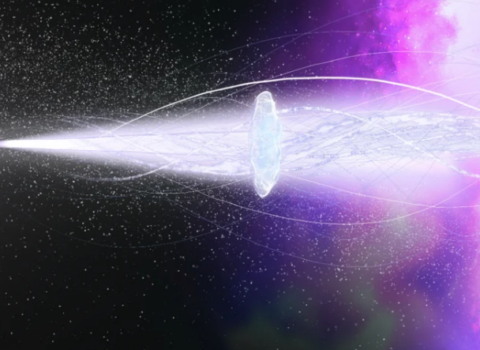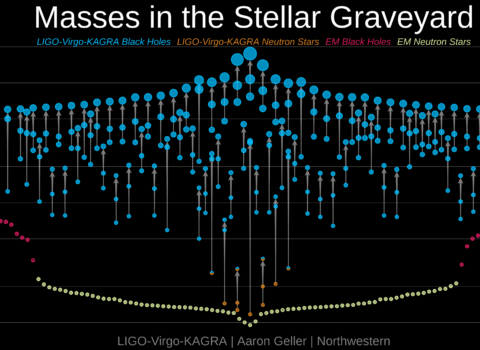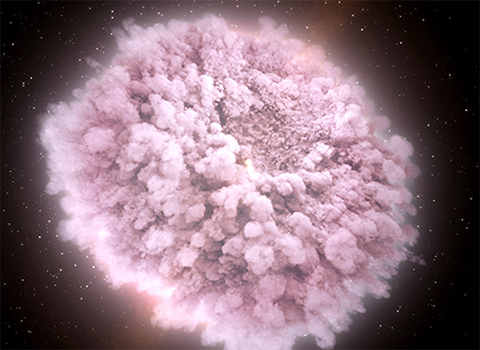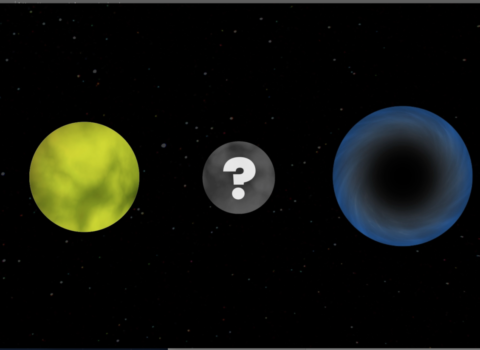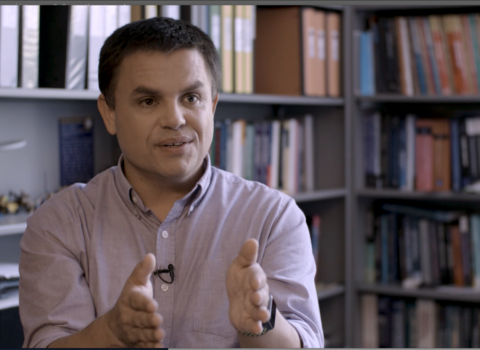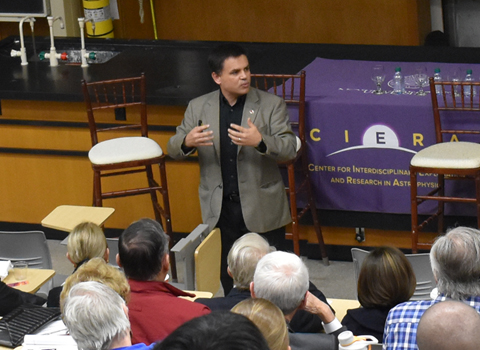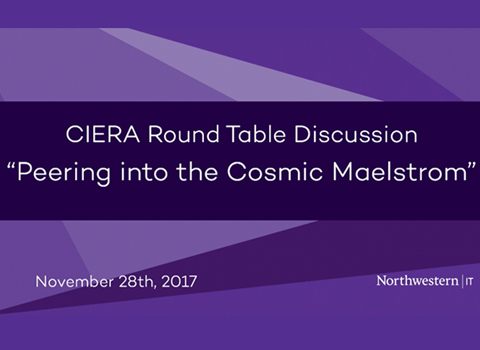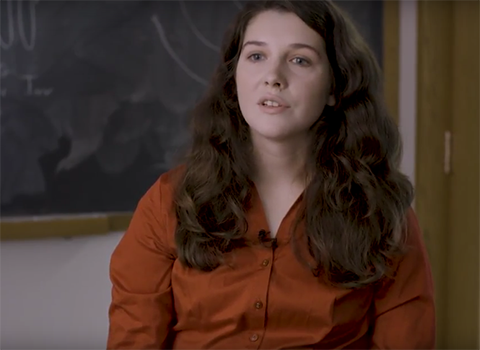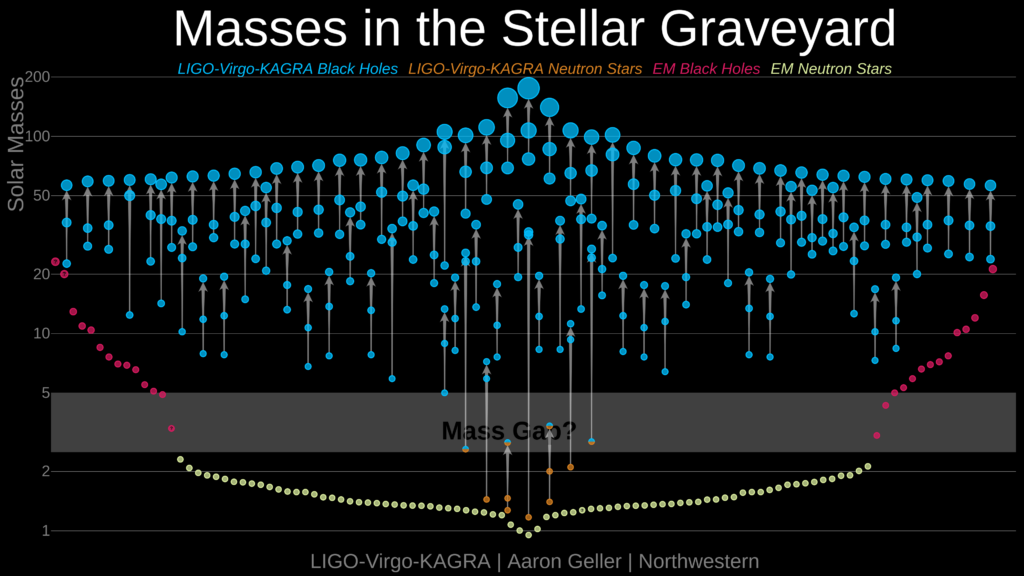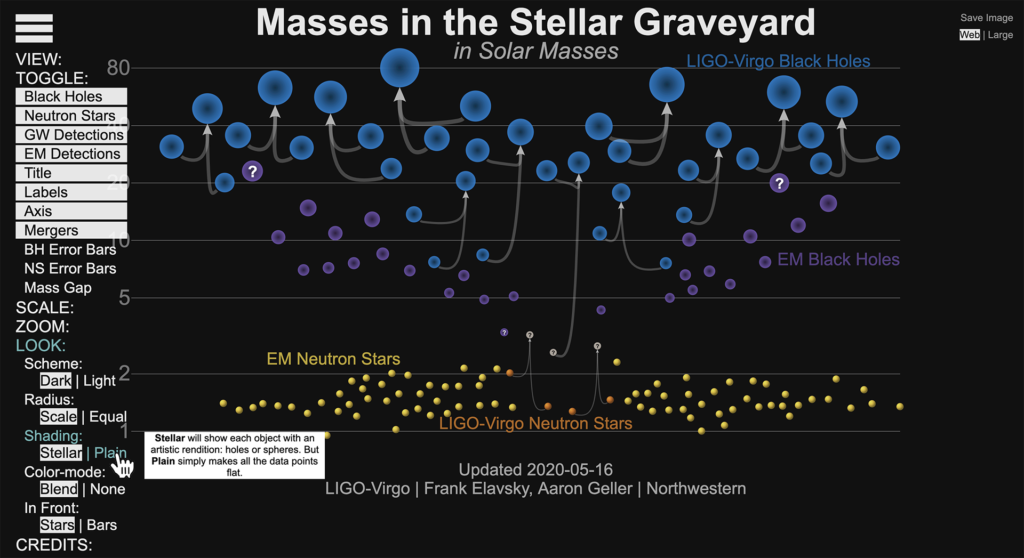
Eccentric Black Hole Mergers in Globular Clusters
Eccentric Black Hole Mergers in Globular Clusters
This simulation shows a binary-binary encounter involving four black holes, which can occur at the cores of dense stellar systems such as gloublar clusters. Such encounters can lead to long-lived “resonating” interactions, through which many temporary binary systems are created. By incorporating a more accurate description of Einstein’s gravity in the equations of motion, the formation
Mike Zevin / Northwestern
- Science,
- Education


